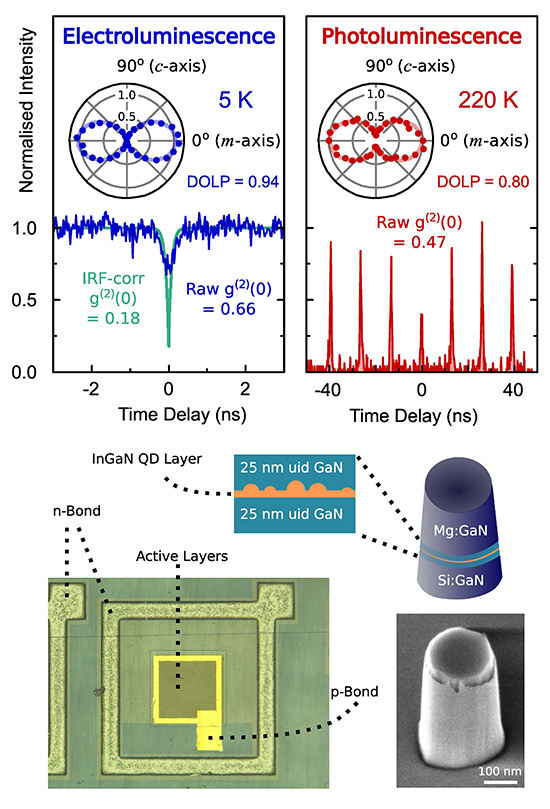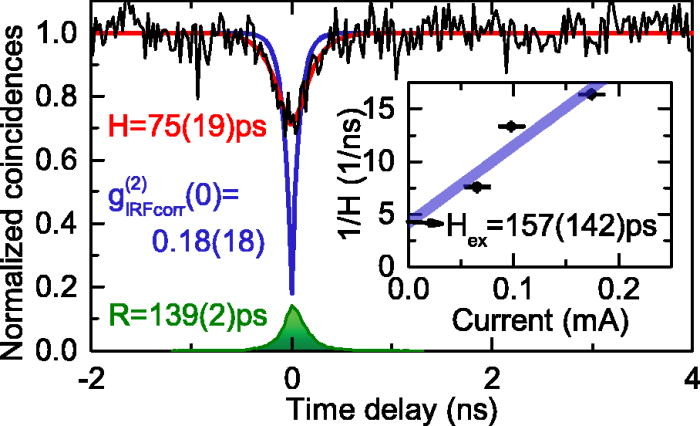Non-polar InGaN quantum dots

Although much previous work has been done in the InAs family of quantum dots, we are interested in the III-Nitrides as well. We have had a long and fruitful collaboration with Prof. Rachel Oliver's group at the Materials Department in Cambridge on nitride quantum dots looking at systems grown on both the c-plane and a-plane. There are reasons for believing that InGaN quantum dots are more promising in the long term for the development of single photon emitted for quantum cryptographic applications:
- The exciton binding energy is high (25meV) so that excitons are stable up to room temperature.
- Quantum dots in the nitride system have piezo-electric fields such that the dots levels can be shifted to both higher and lower energies under the influence of an applied electric field.
- The LO phonon energy is also high (92meV), which suggests that the quantum dots may be more decoupled from the thermal environment than in other systems.
We have been successful in producing single photons from both c-plane and a-plane InGaN quantum dots both pumped optically and electrically. We have also shown that these a-plane dots are a source of polarised photons, with a high degree of polarisation. We have published several papers on these dots recently, and all can be found by using the publications tab on the group page.

A recent highlight (as shown in the Hanbury Brown and Twiss figure above) is the demonstration of electrically driven single photon emission in these systems with good linear polarisation. This can be found in our paper in Applied Physics Letters in 2017.
A review of all our work on nitride non-polar single photon sources can be found here in the Journal of Optics from 2020.
